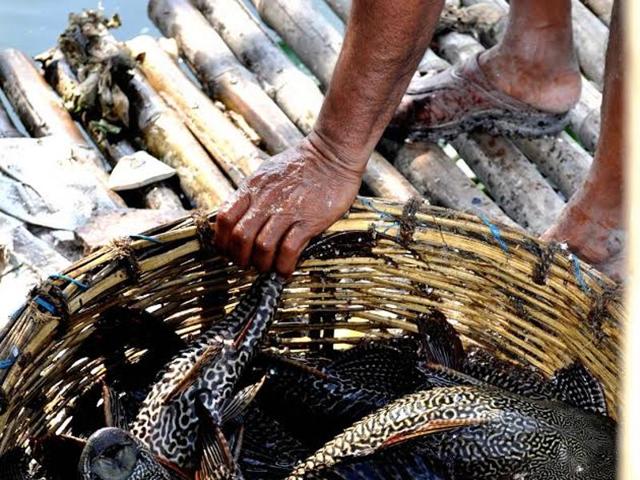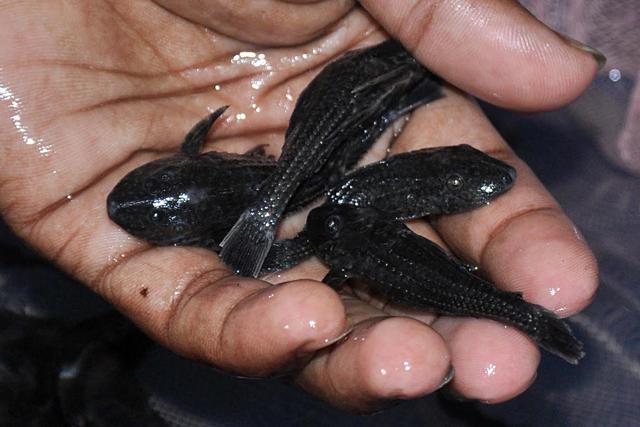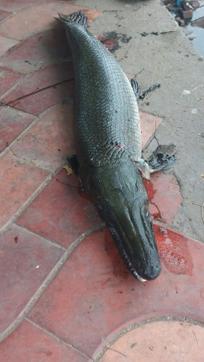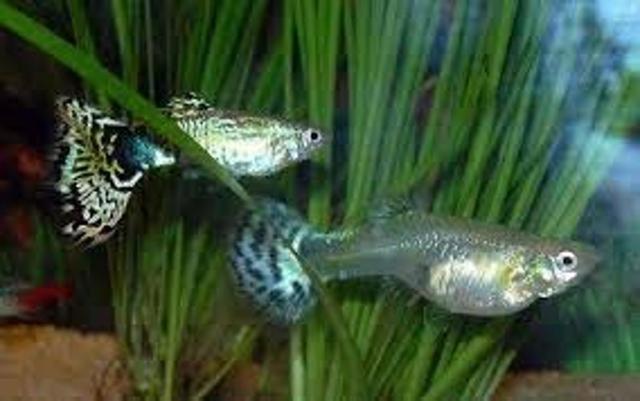The aliens have landed in Kolkata
Plants and animal species not native to Kolkata are taking over the city’s ecosystems.
What surfaced two months ago in was merely the tip of the iceberg!

Shibu Mondal, an angler from Beliaghata, was fishing in the waters of Subhash Sarovar when he hooked a catch that seemed like something out of the alien world. With an alligator-like snout, it was far removed from the fishes inhabiting the lake and almost bit his finger off.
Though terrified at the sight of it, Mondal grabbed his axe and killed it before it could take his finger.
Later, a team of scientists from the Zoological Survey of India (ZSI) identified the spooky alligator-face as ‘Cuban Gar’ — a native of Central America and highly carnivorous.
Though there’s no word on how a native of distant Central America came to inhabit the lake, experts suspect it was let loose into the waters by a reckless pet lover. However, the chance discovery by a small-time angler has drawn the spotlight to a threat to the city’s ecosystem and biodiversity.
Read: KMC’s guppy drive against mosquitoes can backfire, warn scientists
The invasion of ‘Alien species’ have already caused several countries in the west to lose billions of dollars by wrecking the food supply and other benefits that people used to derive from the local eco-system and biodiversity and are now out to threaten our neighbourhood.
An investigation has revealed that deep within the city’s water bodies, a massive churn is in the works. An army of ugly, black creatures, equipped with a protective shield of spines and scales, are taking over every inch of our water bodies.
“Frightful creatures, popularly known as the Crocodile Fish, have infested almost every pond and lake in the city. Be it Subhash Sarovar in Beliaghata or Lal Dighi in BBD Bag, they’re everywhere. Anglers routinely report strange encounters with these creatures while out fishing. They’re drawn to the food on the fishing hook and come in dozens. As they are not edible, anglers throw away these fishes whenever they get hooked to their fishing lines. Even birds and dogs refuse to treat them as prey,” Subrata Sen, treasurer of the West Bengal Anglers’ Association, said.

So, how did these creepy creatures come to infest our water bodies? A native of Central America, they are often brought to India as ornamental fishes for aquariums. Sensing a demand, the aquarium traders are breeding these fishes in their thousands.
A visit to the ornamental fish markets in Howrah and Galiff Street brought out the entire sordid picture.
Read: Pollution leads to decline in native fish population in Powai lake
“Those who keep aquariums often buy juvenile Crocodile Fish or Vermiculated Sailfin Catfish as they help to keep the glass panels and floors of aquariums clean. However, when they grow too big for aquariums, the keepers release them into the water totally unaware of the grave consequences it could have for the marine life. Once in the waters, they breed exponentially and become a major threat to local biodiversity,” Subhrendu Sekhar Mishra, a fish scientist with the ZSI, told HT.
Scientists prefer to call these types of animals and plants as ‘Alien Invasive Species’ (IAS) as they are of foreign origin. They gradually invade our ecosystem and start out-breeding native animals and plants. They are hardy and can adapt to any environment.
Across the world, the IAS is believed to be a major threat to biodiversity that can even lead to extinction of many local species.

The booming aquarium trade is believed to be singularly responsible for the invasion of such alien species in India. The traders often bring exotic breeds, which when released into the wild, wrecks havoc on the marine life.
A recent study by S Sandilyan, a scientist with the National Biodiversity Authority has revealed that at least 27 exotic aquarium species have been found in the water bodies of India. Around 15 of them have already populated to the extent of emerging as a threat to native species.
Read: ‘Rare’ Piranha fish caught from Indore’s Bijasan Lake dies in pond
The trend has been on and only picked up in the recent past, but strangely went undetected. Over time, these species adapted well to the Indian climate and started breeding fast.
While not known to harm humans directly, these species pose a major threat to the eco-system and biodiversity that sustains mankind. It even entails huge financial losses for countries they invade.
“These aliens are now competing with our local fishes for food, space and even oxygen. Their excreta and the ammonia coming out of their gills make the water more toxic. Our local fishes, under stressful conditions, are becoming vulnerable to diseases. Crocodile fishes are, however, very hardy. They’re even equipped to survive any disease outbreak, while the desi carps are the first ones to perish,” TK Ghosh, associate professor of aquaculture department at the West Bengal University of Animal and Fishery Sciences, told HT.
Over the last few years, an alarming spike in incidents of fishes dying in clusters has been reported from the city’s ponds and lakes. Very recently, hundreds of dead fishes were found floating in Rabindra Sarobar lake.
Read: Invasive species can evolve to suit new place
Experts fear the deaths could be the direct fallout of the rise of such exotic species as the Crocodile Fish and Alligator Gar. Only a detailed study could shed more light into this alarming trend, feel experts.
“The likes of the Alligator Gar and Cuban Gar (which caught the angler’s hook at Subhash Sarovar) have wrecked havoc in the East Kolkata Wetlands along the EM Bypass over the last few years. As these species feed on algae found on the beds of lakes and ponds, they’re locked in a battle for survival with fishes having similar feeding habits — Kalbosh, Mrigail, Bele and Gule among others,” Dwaipayan Dey chairperson of a city based NGO, SAFE, said. Dey has an enviable body of work on the East Kolkata Wetlands.

Officials of the fisheries department claimed that the alien invasion in our waters is largely to blame for the disappearance of some popular indigenous fishes from the Bengali platter.
As many as 39 such species have been listed as endangered and in need of conservation.
Experts said the males of the Crocodile Fish are known to dig burrows and tunnels in earthen banks of the water body where the females lay eggs. These burrows weaken the embankments and lead to more erosion of the banks.
Experts are still nowhere near to figuring out a way to reverse this alarming trend. Catching and killing these alien species isn’t a feasible solution as they breed exponentially.
“There are days when we catch 50-100 kilos of them. We also call them Kargil Fish as they started to infest our waters after the Kargil war. These fishes can’t be eaten and even birds and dogs don’t feed on them. We chop them into pieces and feed them to the North African Catfish or Thai Magur which are grown in the bheris,” a worker at Sardar bheri off Chingrihata said.
Some suggest that the only way to get rid of them is to empty out all water bodies where they breed and kill them. However, the idea seems outlandish at best.
Some urge the need for more public awareness on such species. Scientists are now planning to conduct a study in the city’s water bodies to get a sense of their numbers currently and the damage they’ve already wrought to the marine habitat.
Ecologists in India have identified more than 30 plants and animals that fall into the category of ‘Alien Invasive Species’.
The list includes both apparently harmless creatures and disease causing pathogens such as the Pigeon, African Giant Snail, Vibrio Cholerae, Telapiya fish and water hyacinth among others. The likes of spotted Deer, Magur fish and black rat, which are native to India, have gone on to invade foreign shores.





